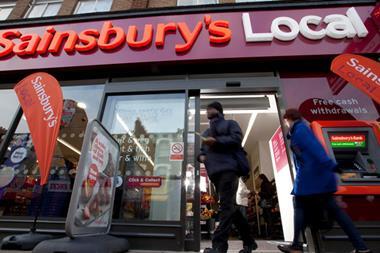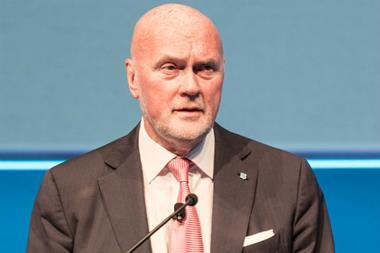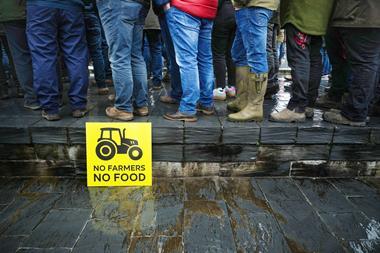There is a legendary quote in the supermarket trade: "I've seen everything at Sainsbury's, just not at the same time or the same place."
It is credited to Sainsbury's former supply chain director Lawrence Christensen and repeated to me by Roger Burnley, his successor of 18 months.
The fact he is able to joke about the quip shows just how far Sainsbury's has come.
Supply chain savings of £50m were announced earlier this year, and between its 19 depots and 490 supermarkets, Sainsbury's is now moving 18 million cases a week compared with 17 million last year - for the same cost.
Speaking exclusively to The Grocer, Burnley explains how removing automation from distribution centres will actually improve performance further, and reveals exciting plans that will help Sainsbury's improve its efficiency and environmental credentials.
Its most radical idea, announced this week, is to use the Thames to transport ambient goods by barge from its distribution centre at Charlton, near the Thames Barrier, to docks as far west as Richmond. A one week trial at the Wandsworth store was successful as it proved goods could be moved faster by water than by road in the capital.
Heavy bulk goods like building materials have frequently been transported along the Thames, but it was the first time the upper river had been tested for moving time-sensitive goods. Burnley is now in talks with the Port of London Authority about rolling out the plan to a dozen stores.
"We are looking at the suitability of alternatives to delivering by road, and using the river could benefit some stores," he says, though he concedes that getting the infrastructure won't be easy. "Finding the right places and equipment may be difficult as so many wharves have become flats. If we can get around the challenges, it makes sense to deliver ambient product by water. The focus is on making this actively viable."
Sainsbury's actually used the Thames for distribution when the grocer opened in 1869, and now may be a good time to take to the water again. "There will be a dramatic increase in water traffic because of the 2012 Olympics," says Tim Kershaw, MD at supply chain consultancy Libra Europe. "Everything needed for the Olympics will come in to Greenwich by water so the infrastructure will be improved.
"Sainsbury's Thames idea is radical but I think it will be very successful. Using the river may be slower, but it's also cheaper. You have to try new things, but you need a solid base. Sainsbury's has sorted its problems so now it can innovate."
Those problems, which peaked in 2004, were caused by an outsourced IT system that backed up automation at distribution centres, and centred around two in particular, Waltham Point and Hams Hall.
"They were known as fulfilment factories and therein lay the problem," says Burnley. "The way the products were picked was not store-friendly enough. They now perform much more effectively and efficiently but the next phase, to move them on to what our stores need, is to take out a big part of the automation - about 50% of the footprint of the Waltham Point site."
The updating of Waltham Point is due for completion in September, when work will start at Hams Hall. The move away from automation can also be seen at a new 'green' depot' under construction in Northampton, which will be 100%-manual.
"Transforming the two centres (Waltham Point and Hams Hall) is a year-long process, but each centre will pay for itself in two years," says Burnley, although he won't say how much the changes will cost.
Burnley is also excited by a raft of other efficiency initiatives. He has launched a hands-free voice-picking trial at the frozen distribution centre in Stone, Staffordshire, while demand forecasting is being improved so stores and depots talk to each other more.
But the most significant change is to its transport network. Burnley is keen to gain more efficiencies from backhauling and is introducing an Integrated Transport Management System, which links in-vehicle computers and satellite tracking with a scheduling system that plans deliveries. It is on trial at four depots (Hams Hall, Stoke, Stone and Haydock) and 83 stores, to be rolled out in September.
"We will have a total view of the system in real time," says Burnley. "We will have screens at stores saying what is arriving and when. It is up to the minute and can deal with delays because of traffic or accidents. A store can get seven to eight vehicles arriving in a day and we can now make sure they don't clash."
Burnley expects the new system to reduce total journey distance by two and a half million miles a year, trim the fleet by 50 vehicles and cut CO2 emissions by 3%. The strategic position of the Northampton depot will also reduce journey distance, and its green credentials mean it will save costs - a daylit roof reduces the need for artificial lighting and increased air tightening cuts the heating bill. It also has its own power plant that can heat and cool the building.
Some of the power is even generated by delivery trucks. At the entrance to the site, they will drive over paddles, a little bit like trumpet valves, that generate electricity and save even more money.
The 530,000 sq ft depot will set new standards for environmentally friendly design, but shows how being green can also cut costs in the long term.
It comes on top of Sainsbury's more established solutions, such as switching from road to rail where possible.
The majority of its Scottish bottled water and about 80% of its Italian wine are delivered by rail. Infrastructure is once again an issue, though. Finding the right rail links can prove tricky, and there is the added problem of ensuring a train is full. Burnley thinks this can be helped by more collaboration between retailers, for both commercial and environmental reasons.
"I believe there is mileage in retailers transporting products together, where commercial issues can be overcome. Filling a train makes sense though it will always be a fine line between maintaining a competitive advantage and finding the right level of collaboration."
He has even had an initial conversation with Asda chief operating officer David Cheesewright about sharing a consolidation centre, although he is swift to point out it was just a conversation.
But it's another example of the ideas Burnley is willing to consider in search of efficiency. As he leads Sainsbury's supply chain into its final year of recovery, you can guarantee the Thames won't be the only barrier he has to navigate, but expect innovation to be at the heart of the solution.a river runs through it
Once food is dispatched from the Charlton depot it would be taken by barge along the Thames and dropped off close to the stores
Stores that could be supplied are Streatham Common, Wandsworth, Fulham, Clapham, Balham, Nine Elms, Putney, Merton, Cromwell Road, Chiswick, Richmond, North Cheam
A one-week trial showed that freight moves faster on the river than on central London's roads
Moving goods from road to river could save 220,000 miles on the road every year



















No comments yet